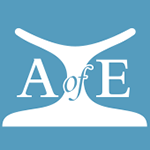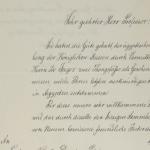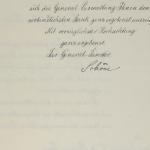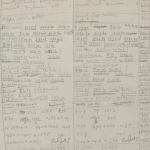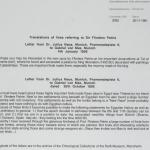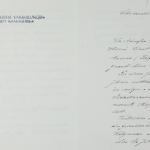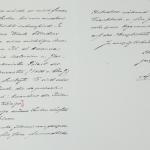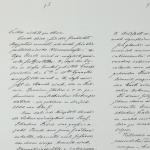1894-95 Naqada
Petrie led excavations at Naqada with private sponsorship from Haworth and Kennard, while James Quibell worked at the nearby cemetery of el-Ballas under the aegis of Petrie's Egyptian Research Account. At Naqada three Predynastic cemetery areas were cleared, as well as a settlement area:
- Cemetery T (by the tumuli): 58 graves were excavated. Objects from this cemetery were marked with a 'T' in front of the grave number.
- Cemetery B (by Kom Belal): 883 burials were excavated. Objects from this area were marked with a 'B' in front of the grave number.
- Main Cemetery (Great 'New Race' Cemetery/Cemetery N): 1918 burials were excavated. Objects from the main cemetery were marked simply with a number, just like the material excavated simultaneously at Ballas under Quibell's lead. Sometimes the latter was differentiated from Petrie's work with the letter 'Q', but not always. It is therefore sometimes difficult to tell if an object with a number between 1 and 883 from the 1894-95 season are from Naqada or Ballas. Another assistant of Petrie's at Naqada was Grenfell who excavated a very small group of about 6 graves that were not published. Artefacts found by Grenfell were marked with a 'G'.
- South Town contained primarily Predynastic remains, although a small part of it had been built over in the New Kingdom. Objects from this town are marked 'South Town', 'S. Town' or simply 's'. In the literature other names for this area of the site include Tukh and Zawaydah.
At the time of excavation these burials were referred to by Petrie as belonging to the 'New Race' as he believed then that the remains represented an invading group of people. One possibility Petrie considered was that this culture came from Libya so occassionally objects excavated at this time were referred to as 'Libyan'.
Other periods were also encountered at a number of areas, including:
- New Kingdom Temple of Nubt (Temple of Seth).
- Two New Kingdom rock-cut tombs and a 19th Dynasty burial in the South Town.
- Coptic remains.
- a dummy pyramid of the Old Kingdom.
The distribution from Naqada was particularly complicated. In the first instance, following partage objects were shared between Petrie and his two other sponsors - Jesse Haworth and Martyn Kennard. Much of Haworth's collection is now in the Manchester Museum (an extension to which he helped fund), while Kennard's was largely sold at auction by Sotheby's in 1912, although a sizable portion was presented to London's Victoria and Albert Museum (most notably the monumental faience was-scepter from the temple of Seth). In addition to this 3-way split, Petrie notes in the excavation memoir (1896) that a complete series of finds would presented to the Ashmolean in Oxford. Petrie went on to note (p.x) that "other museums in England, Germany and America, have also received considerable selections; and a large part of the Research Account results went to the principal contributor, the University of Pennsylvannia".
It should be noted that other collections of material from Naqada and Ballas were acquired by other members of the excavation team, such as Garrow Duncan whose private collection was donated to both Glasgow's Hunterian Museum and Dundee's McManus Museum.
It is additionally clear that Petrie may presentations to private individuals:
- A letter in the archives of the Ethnological Collections of the Reiss-Museum in Mannhiem from Julius Naue to Gabriel von Max invites him to visit him to see a recent acquisition dated 25 October 1895: “Recently I have received through the generous kindness of Prof. Flinders Petrie a large number of finds from these tombs, among these many vessels some of which are painted, flint tools and interesting artefacts made from slate among those also some strange weapons” (translated from the German).
- In 2015 a Black-topped pottery vessel a Naqada tomb turned up in a Cornish garage, having been in the family for some 60 years. It was accompanied by a printed label describing it as 'Libyan pottery' - which was Petrie's interpretation of the location of what he called a 'New Race' at Naqada.
Catalogue of a collection of Egyptian antiquities: discovered in 1895, between Ballas and Nagada ; exhibited at University College, Gower St., London, July 1st to July 27th. 1895. London : Egypt Exploration Fund.
Petrie, W. M. Flinders and J. E. Quibell 1896. Naqada and Ballas: 1895. British School of Archaeology in Egypt and Egyptian Research Account [1] (1st year). London: Bernard Quaritch.
